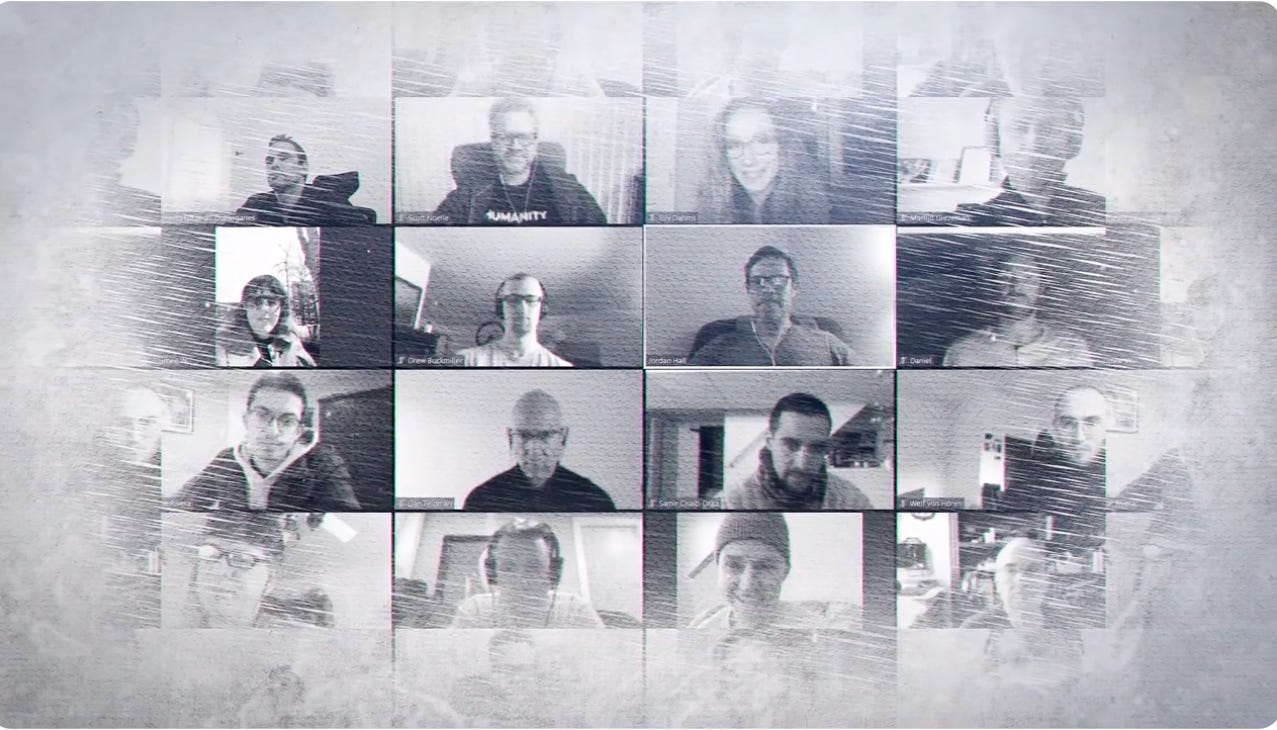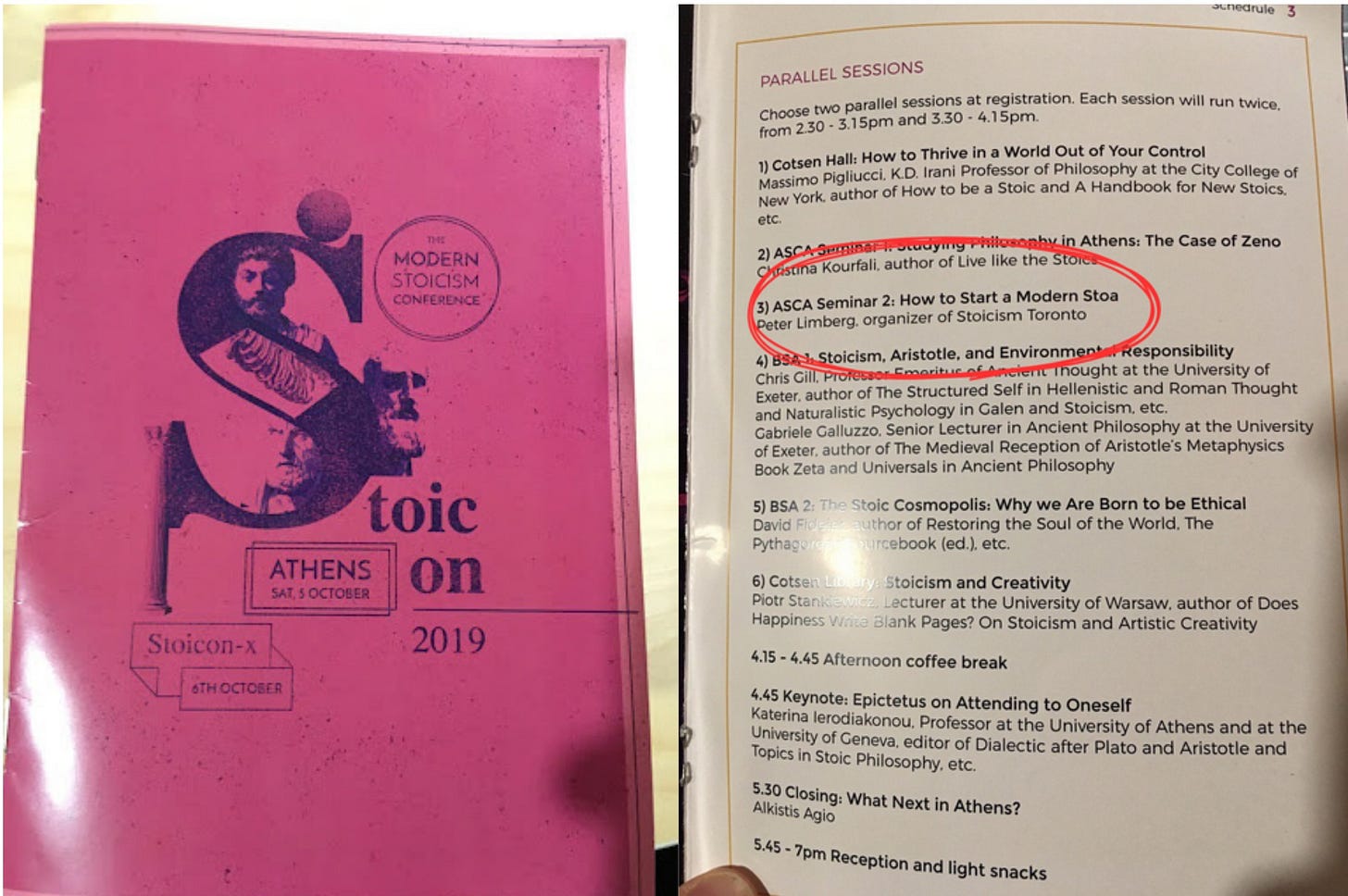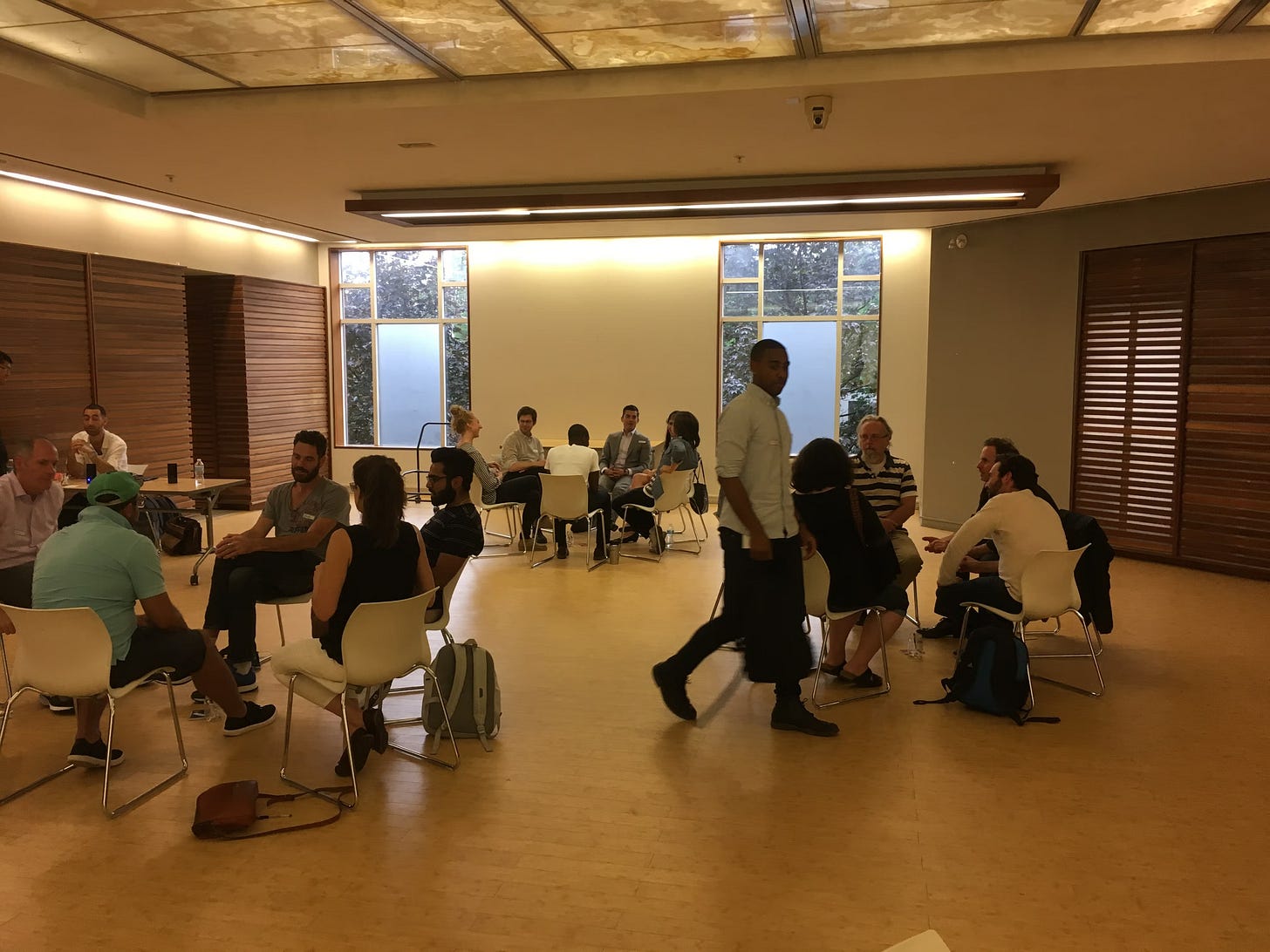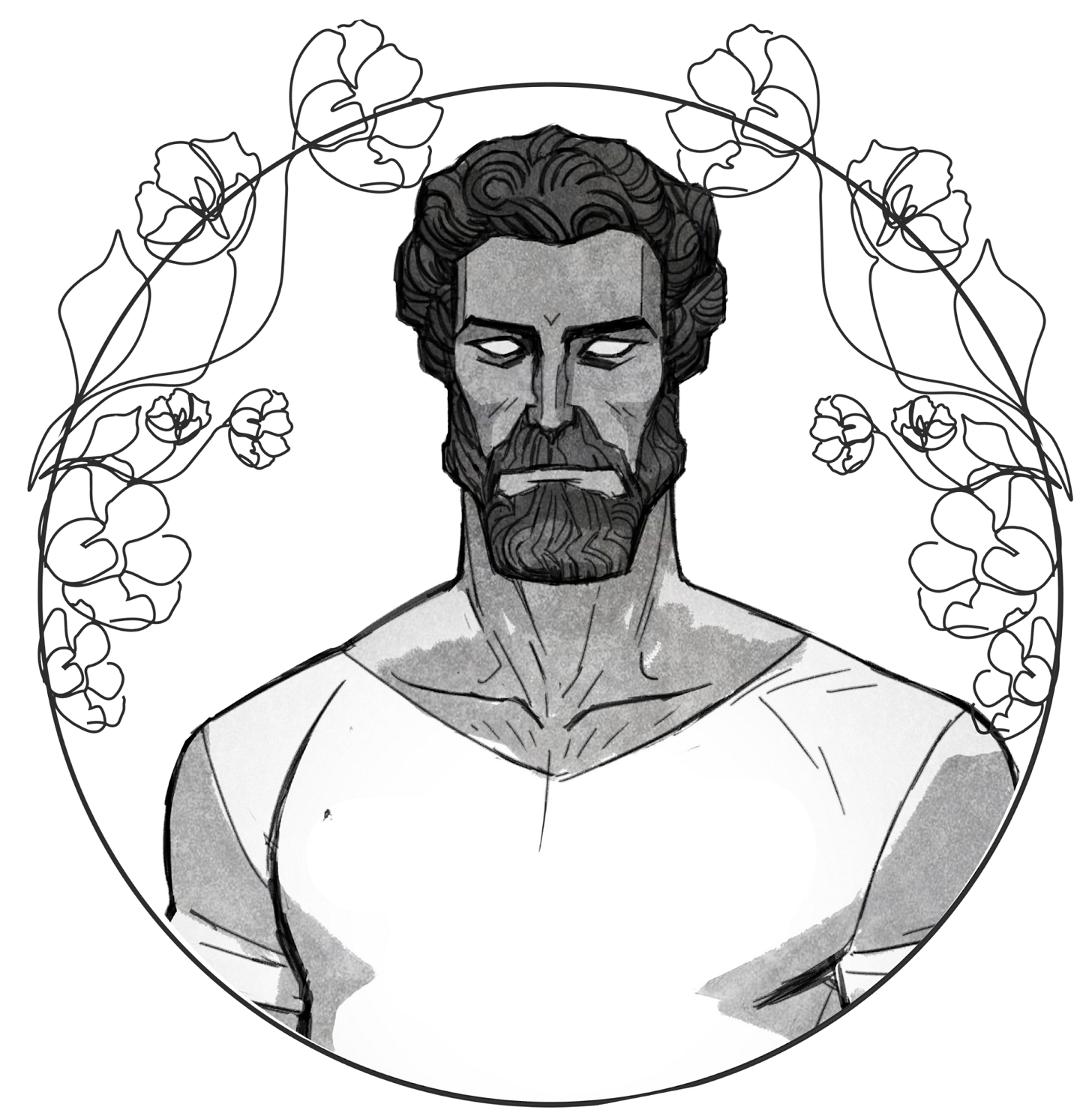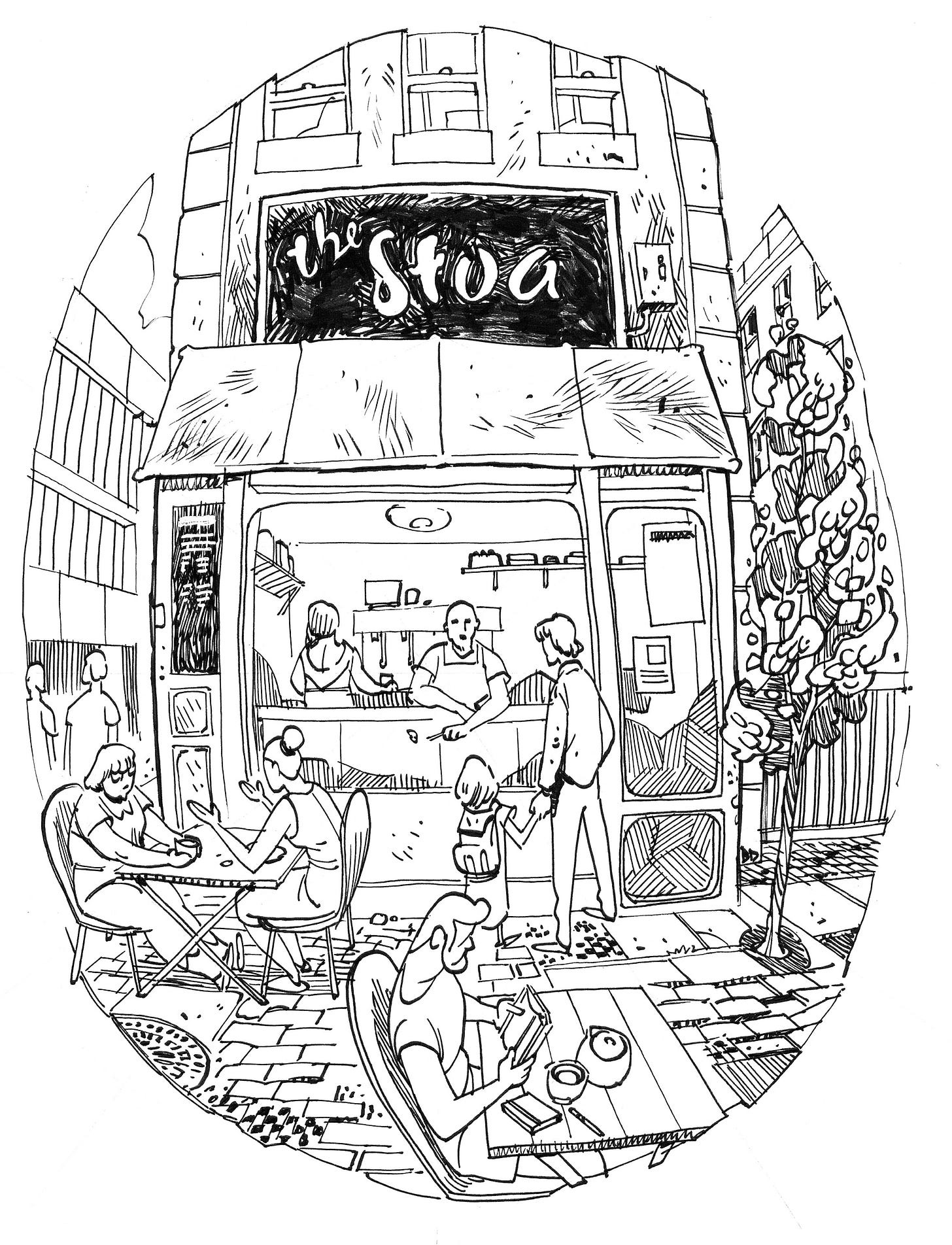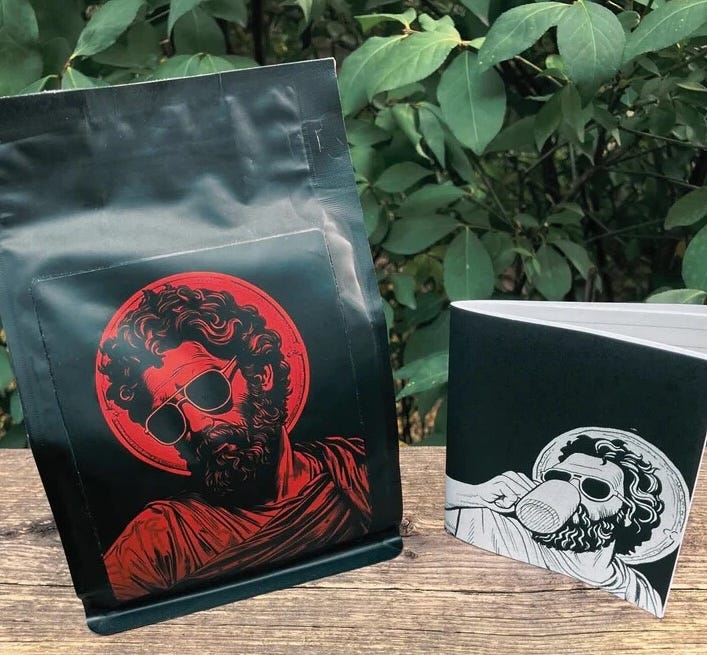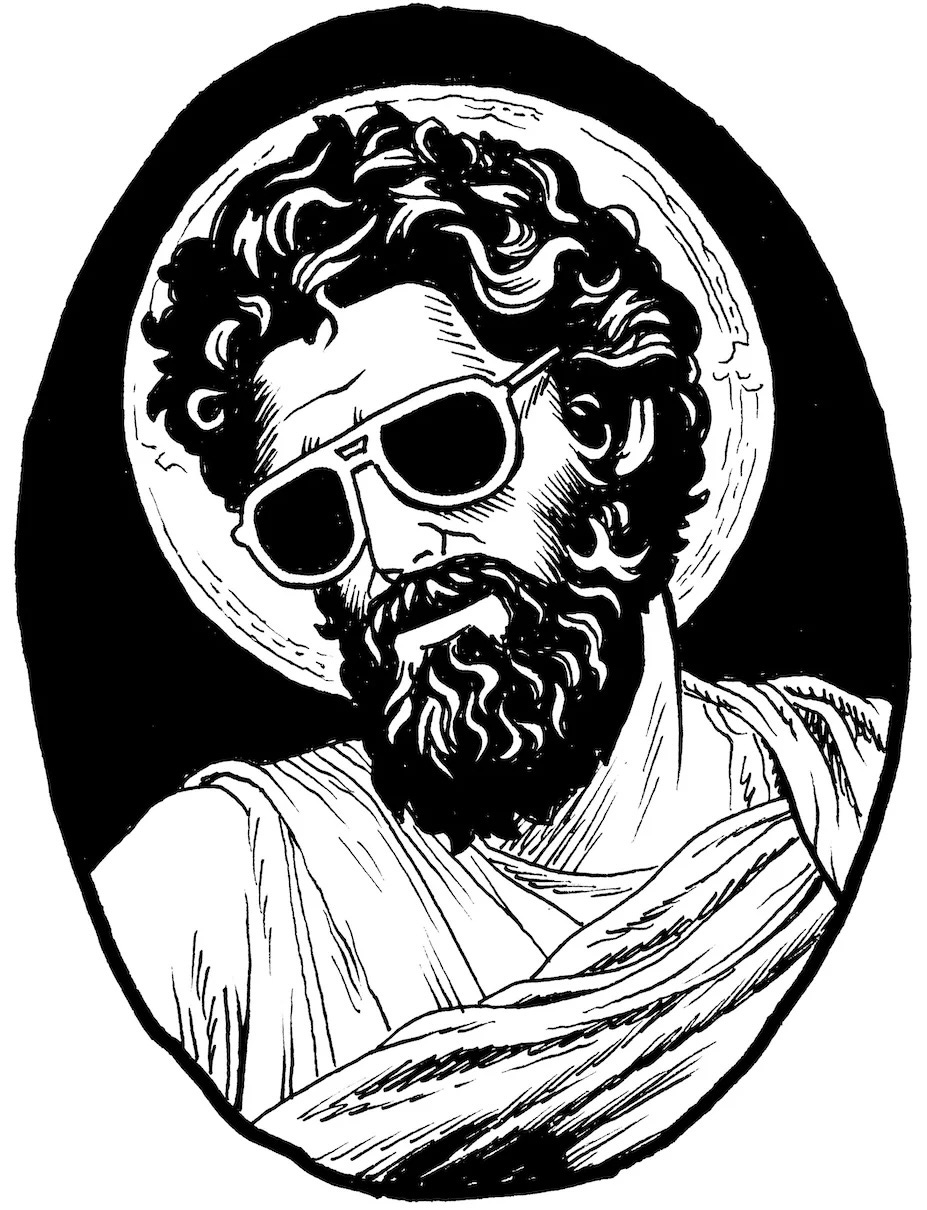How Not To Build a Stoa: A Very Online History of The Stoa
I get asked often: “What is The Stoa?”
I’ve purposely avoided answering or offering any public description of it, but now, if you ask ChatGPT, it gives a pretty clear answer:
💻 Modern: The Stoa (21st Century)
A Digital Agora for Weird, Wise, & Wild Conversations
The Stoa is also the name of a modern online platform/community, created around 2020 by Peter Limberg.
It started as a kind of intellectual sanctuary during COVID lockdowns, and evolved into a hub for:
Post-rationalist thinkers
Philosophical weirdos
Integral theorists
Crypto mystics
Internet monks
Meta-modern pilgrims
🧠 What Happens There?
Zoom salons, open dialogues, experimental events, and deep-dive discussions into:
Meaning-making
Spirituality after religion
Culture, tech, memetics, complexity
Sovereignty, sensemaking, shadow work
Think of it like: If Plato’s Academy, a podcast, a therapy group, and a meme page had a baby — and raised it in the internet wilderness.
It’s influenced by: Stoicism, yes — but also metamodernism, Jung, Buddhism, cybernetics, and Burning Man energy.
While I’d use different phrasing in a few places, overall, it’s pretty accurate. Since there’s no hiding now, I might as well give a proper description myself.
Before the Beginning
The original Stoa Poikilē was created in 5th-century BCE Athens. It was an open, yet protected, place at the heart of Athenian life. It was also where philosophers hung out, and where the “Stoics” got their name.
I was in Athens in October 2019, presenting at the annual Stoicon, a conference where modern Stoics gather to talk about Stoicism, and gave a presentation called “How to Start a Modern Stoa.”
I was invited because I was organizing Stoicism Toronto, the largest in-person Stoic group in the world at the time. I believe it held that title because other Stoic groups only talked about Stoicism, whereas we treated it as an actual Stoa: an open space for philosophical and meaningful conversations to occur.
For example, our second event at Stoicism Toronto, held in June 2017, was simply called The Stoa.
We hosted many in-person events, and when I was presenting in Athens, basically the culmination of the Stoicism Toronto experience, I had the idea to open a “philosophical coffee shop” in Toronto, which was going to be called The Stoa: a third-wave hipster café that moonlights as a philosophical event space.
But then COVID happened, and when it did, The Stoa happened too.
The Birth
It was born on March 21st, 2020, and the very first session was a situational assessment by Jordan Hall, the “sensemaking general,” occurring during the heightened anxiety of that collective moment. If you recall, it felt like the world could end, but for many of us, it was just beginning.
The Stoa was an open space, full of events—some recorded, many not. Anyone could visit, and thousands did, with hundreds of fascinating guests from across the philosophical and political spectrums. (Just browse the 700+ videos and you’ll see: The Stoa is the most intellectually diverse place on the internet.)
Despite being a purposely obscured and hard-to-find place, it was somehow briefly mentioned by the New York Times, and was affectionately dubbed the “Burning Man of the internet” by those who gathered. It was a special place, hard to explain, one of those “you had to be there to know” things.
A person reached out to me recently, reminding me what it was like:
I followed The Stoa some time ago—not only as a series of events, but as a cultural gesture. It seemed, for a while, like one of the rare spaces where sincerity wasn’t subdued by structure, and inquiry was not yet shaped into something to be sold. It felt like a commons in the truest sense—briefly, and beautifully, outside the gravity of monetised mindsets.
It felt spiritual, almost otherworldly, with many synchronicities occurring. I was “going crazy,” and my sensual capacities were on overdrive. I was told I was going through a Kundalini Awakening. So much energy was channeling through me. I was having breakdowns and breakthroughs every day.
When I was fully plugged into the experience, I felt like I was “on purpose,” without compromise, for the first time in my life. It might seem silly to outsiders: “Dude just had a newsletter, a YouTube channel, and ran Zoom events.” And my family basically thought I was doing nothing with my life—unemployed with a “podcast.”
Still, it felt like two worlds: the normal, boring, status-obsessed one, and the magical, enlivening, imaginal-induced one The Stoa was living in.
A true sanctuary for the meaning-crisis wanderers.
The energetic experience was most intense during the first three months. I don’t know if I’ll ever return to that state. I will always be grateful for it. It forever transformed me, and hundreds of beautiful people came into my life thanks to it.
I lucked out, really. Many experienced COVID as something awful. For me, it was a blessing.
This open phase ended on June 28, 2023, when I declared the end of the “public” Stoa.
The Stoa was a child of COVID. It began when the WHO declared COVID-19 a pandemic, and when the pandemic was declared over, The Stoa’s final public session soon followed.
3.5 years: the pandemic years.
Or seasons, as we called them.
The Pandemic Seasons
Each season had a new logo of “Stoa Marcus,” our spiritual mascot.
The logos, based on Marcus Aurelius, were created by a different illustrator each year. In essence, they represented whatever I was personally processing at the time. Beginning in Season 2, the intro videos, crafted by the extremely talented
, were designed to reflect this as well.Season 1
Fresh-faced, with a “Stoic” innocence. Naively ready to go all in at the knife’s edge, leaving the normal world behind, about to get spiritually slapped.
Season 2
He took the slap. Cool. Now he’s all in. Now he’s “cool”—giving zero fucks so he can give full fucks, but still sensing into what matters most.
Season 3
Integration. Loving what was denied. A surrender. The polarities embraced. Oneness is near.
Season 4
The return to the masculine, but more integrated this time. More whole. A Stoic Zaddy who lets a thousand Stoas bloom.
The first three logos went over well. But the fourth—drawn by my spiritual brother,
—was polarizing. It triggered people. Some guys thought it was cool, and some women thought he was hot. Other guys thought it was cringe, and some women were triggered by him.I softened the logo and added flowers around him to match the video.
It was a soft move. I didn’t want to put flowers around him. I creatively compromised. I dropped the masculine courage to follow the deep intuitive impulse that had guided this whole project, or what, at the time, I called the “daemon”: a term I used to describe the intense creative energy flowing through me, which carried a sense of perfect knowingness, but could only exist in deep unknowningness.
All of this was happening unconsciously, but soon, I realized I had become something I never thought I’d be: audience captured—when you bend your integrity to appease your audience, your “community,” an egregore (!!!), or those from whom you unconsciously seek validation.
The creative impulse that had been driving me was now gone. I no longer wanted to do so many online events. The world had opened up again, with people cohering in person, and being outside felt more interesting than being online.
Also, on the other side of becoming more emotionally integrated, I lost trust in this “daemon.”
It had to end—at least the way it was living.
So, staying in integrity with the same spirit that started the project, I closed it.
Season Four did feel like it ended prematurely, though.
Season 5: The Inverse Course
I was invited to be a “Philosopher-in-Residence” at Daylight Computers last year by their founder, who was an early fan of The Stoa. This occurred before The Stoa’s fifth birthday, and given the similar energy surrounding the project, it felt right to bring The Stoa back.
However, this time it would be private, going deeper into the “dark forest,” a term repurposed by
to describe happenings on the internet that hide from the surface web and are non-indexable, allowing new cultures to emerge.Now, people were invited to come to The Stoa either privately or behind a paywall. This relieved the pressure of creating a community, something I never wanted to do, and allowed me to experiment with something new: the inverse course, as discussed in a recent entry.
On the other hand, an “inverse course” has a teacher who does not know more than the students but instead stewards the group, unlocking their natural intelligence in a way that draws upon collective intelligence, allowing the participants to “teach the teacher.” This process ultimately leads to the intellectual emancipation of everyone involved.
With this framing, the first four seasons of The Stoa functioned as an “inverse school.” Now, I’m simply applying that spirit more narrowly, focusing on specific themes.
We are in a period of rapid change, facing an unpredictable future. We need new knowledge and skills, or forgotten ones that must be remembered and repackaged.
It would be disingenuous for one person to claim they possess such knowledge. The premise instead is that this knowledge already exists. It is lying dormant and unspoken, waiting to be teased out among the right people.
In Season Five, we experienced two inverse courses. The first was called The Entity Pill. In this course, we explored the phenomenon of discarnate entities, unseen beings perceived as real, which more and more people are experiencing, including myself. Many who experience such things carry shame or stigma, fearing they’re simply "going crazy."
A new discipline emerged from this course that could be described as “transperspectival demonology.” It involves holding multiple perspectives and explanatory models for these phenomena, along with practical tools for protecting oneself from malicious entities. You can watch The Entity Pill sessions here.
The second course, which is still ongoing, is co-hosted with internet ethnographer
and called Internet Real Life (IRL). In this course, we are searching for a new philosophy of the internet—one that goes beyond Internet Optimism, which dominated the 1990s to early 2000s and claimed “the internet will save us,” and Internet Pessimism, which shaped the mid-2010s to early 2020s and claimed the opposite: “the internet will destroy us.”In essence, we are discovering what an “Internet Realism” position could look like, one that supports a wise and grounded relationship with the internet. As part of this series, I developed The Pull framing, which includes a presentation and related practices for resisting the internet’s more compulsive forces. You can watch the IRL sessions here.
Transperspectival demonology and Internet Realism are just the beginning. There is still so much knowledge and so many skills waiting to be revealed. I’m interested in helping to facilitate this process, and in refining this form of teaching.
While this was a highlight of Season Five, it wasn’t the only thing that happened.
A Philosophical Coffee Shop?
As mentioned before, when hosting Stoicism Toronto sessions, the original vision was to open a philosophical coffee shop called The Stoa.
I announced this publicly to participants of the online Stoa, which I partly regret, because people keep asking me:
Did you open your coffee shop yet?
No, I did not.
Why? A few reasons. One of them being: it doesn’t feel like the right time—yet, or maybe ever.
Still, I felt obligated to move in that direction, and thought launching a coffee bean would be the first logical step.
The Stoic Smile: a coffee ritual accompanied by a zine, illustrated by famed Toronto illustrator
. We did a limited release, but I never promoted it too aggressively. At the time, the creative impulse behind The Stoa was missing. I had lost the plot, and The Stoic Smile felt disconnected from the overarching philosophical coffee shop project. It started to feel like I was just selling a novelty coffee product, something interesting to try, but not something that filled me with the usual creative aliveness.Besides, I quit drinking coffee at the end of last year as part of my quest for 2025 to be a year free of addiction. It feels good and freeing, but also out of integrity to be selling coffee while not drinking my own supply.
The logo for The Stoic Smile was originally AI-generated. And while it looked pretty badass, it never quite felt right. Luckily, Chester Brown recreated the logo, adding a subtle “Stoic” smile, which I now consider the official Season 5 logo of The Stoa.
In Season 5, Stoa Marcus was the most “whole-y.” He was not only philosophical and spiritually inclined, uniting the archetypal polarities of masculine and feminine, but also had no hesitation about making money, so long as it aligned with a greater truth.
I called today’s entry How Not to Build a Stoa, the inverse title of the talk I gave in Athens. Something feels right about The Stoa being a physical location—in the right way, in the right place, at the right time—but only if I’m truly called.
Maybe The Stoa isn’t meant to live as a physical space, but as something online, or something liminal, an in-between place. I’ll be remotely presenting at Harvard soon, and I’ll be bringing The Stoa with me. There will be two “geographies” present: The Stoa’s and Harvard’s. Perhaps it is a sign of things to come.
In any case, I am happy to live feeling like a fool: saying I was going to build something, and then not doing so.
Season 6: What’s Next?
I'll most likely be experimenting more with “inverse courses,” but beyond that, I’m not sure what’s next.
Something has definitely shifted.
The Stoa will never be like it was in the first four seasons. I still recognize I was plugged into something creatively truthful, but there was “prelest”—false spiritual insight—involved, which muddied the spiritual waters.
I am a Christian now. The fate of all “Stoics,” really, which the new Season Six intro winks at.
While truth is something I always aim to embody, it’s not something I tend to proselytize. Besides, that’s not how one “steals the culture,” as
once put it during one of the first sessions at The Stoa.I am at my creative best here when I treat The Stoa as an art project, aomething that can come and go at any moment. When it gets pressured by others to do something or be something—whether a community, a movement, or a coffee shop, and I succumb to that pressure, even slightly, I lose the plot.
Essentially, this project has been a personal practice for me, and maybe for you, to attune to what matters most. When I do, I know, because shared aliveness, not attentional hype, usually becomes the most salient feature.
I do like keeping things on the down-low in order to maintain this aliveness. But given the upcoming presentation at Harvard and ChatGPT saying nice things about us, there will be fewer places to hide.
The Stoa will keep the private, more dark-foresty element from Season Five, but it will return to the openness of the first four seasons. We’ll have public events once again. It shall be a semi-public place for the time being.
Season Six has begun. Please do me a favour and don’t ask how to build a Stoa. I don’t know. That’s not my job. I am just the steward.
The new logo for Season Six is in the works, created by a very special artist. New public events are coming soon as well. If anything in this entry resonated with you, or if you have a sense about The Stoa that you think would be good for me to know, feel free to send me a message below…

